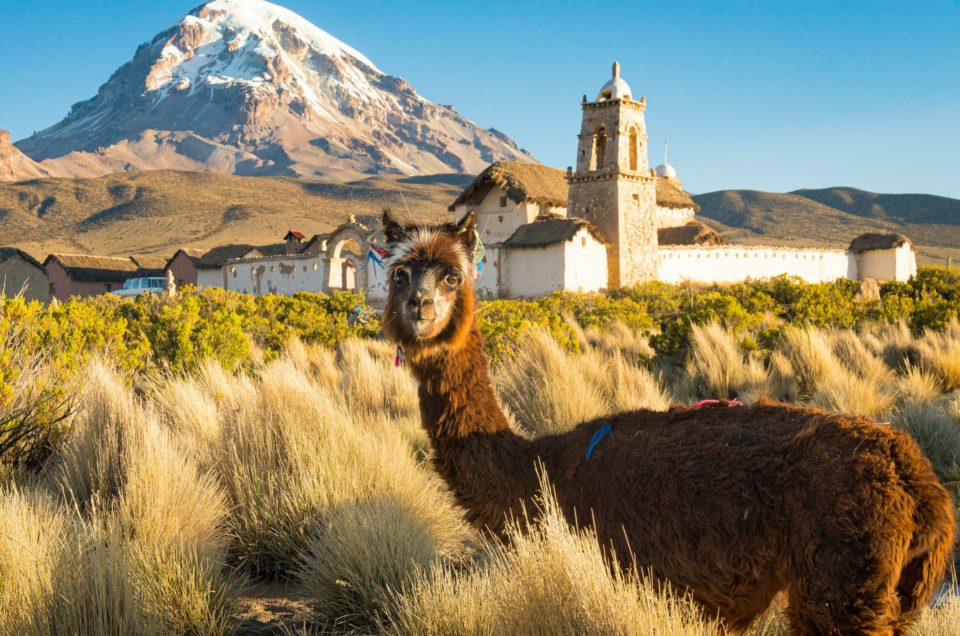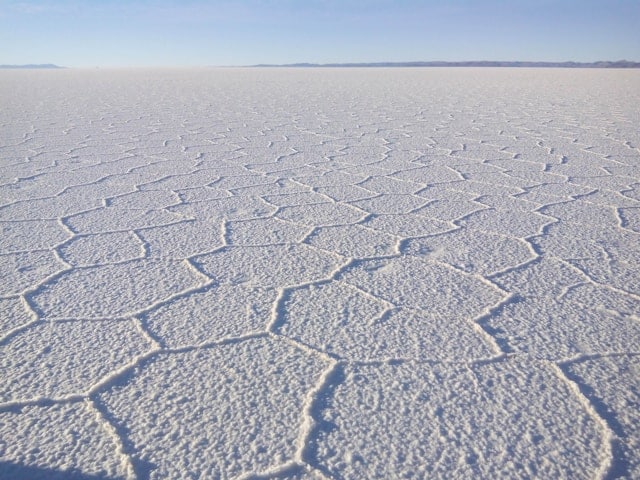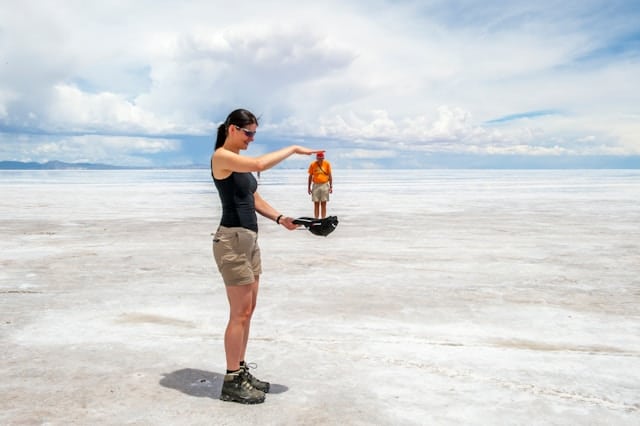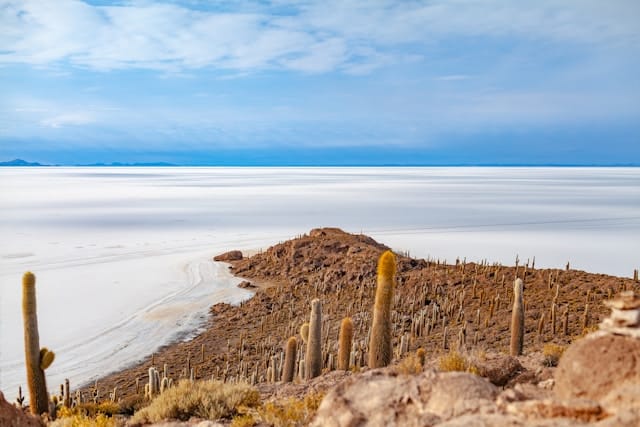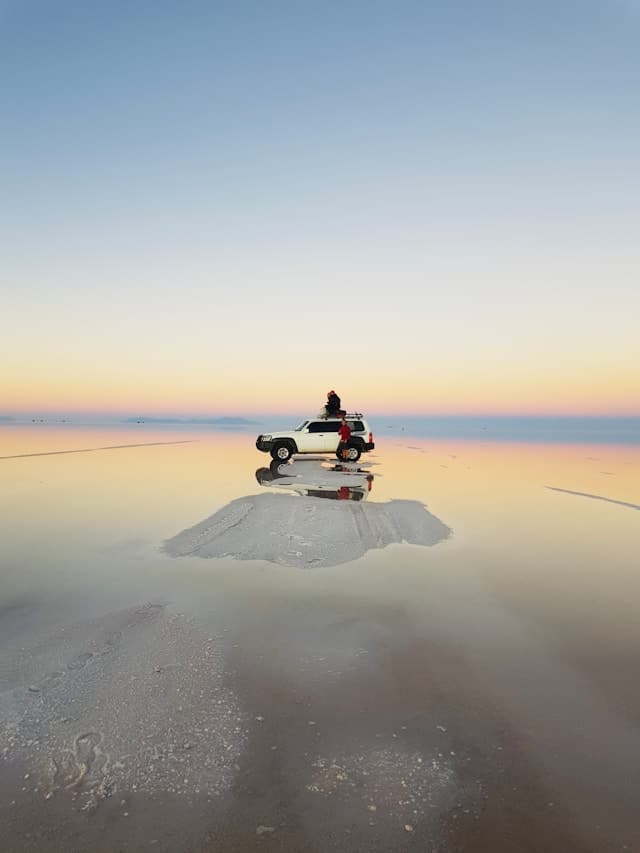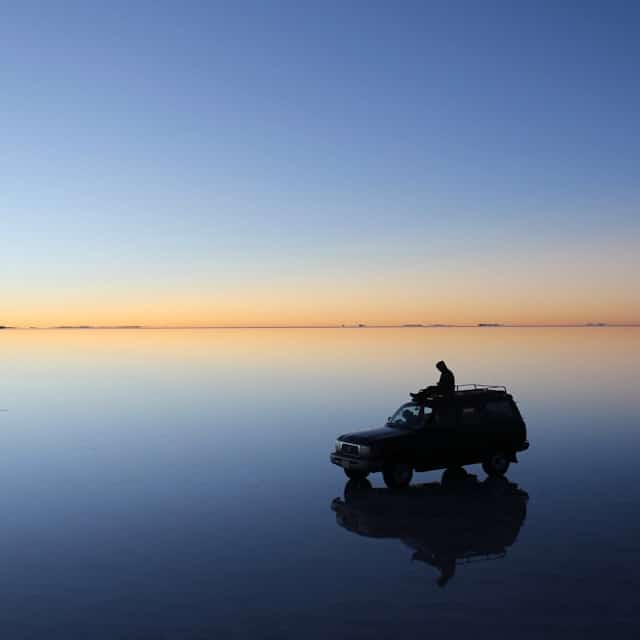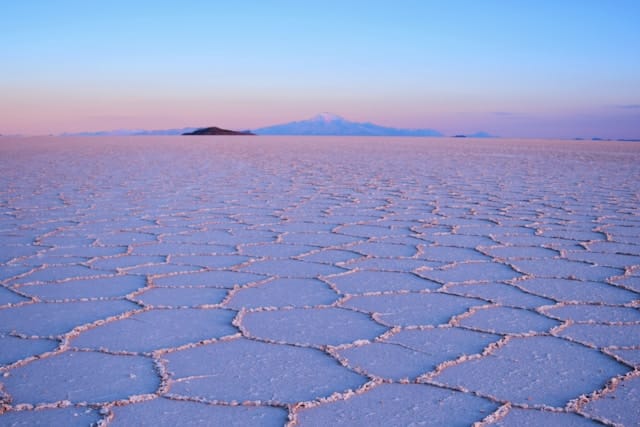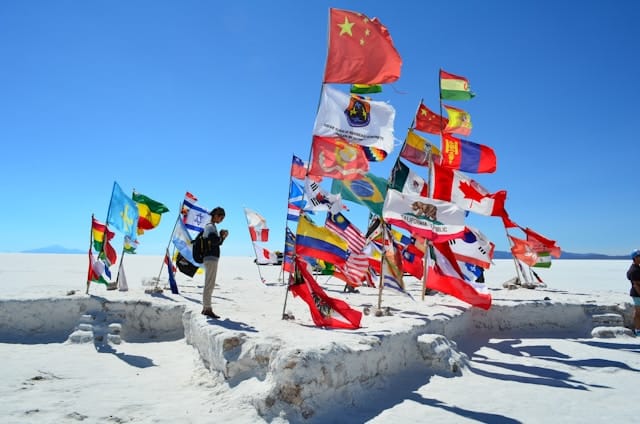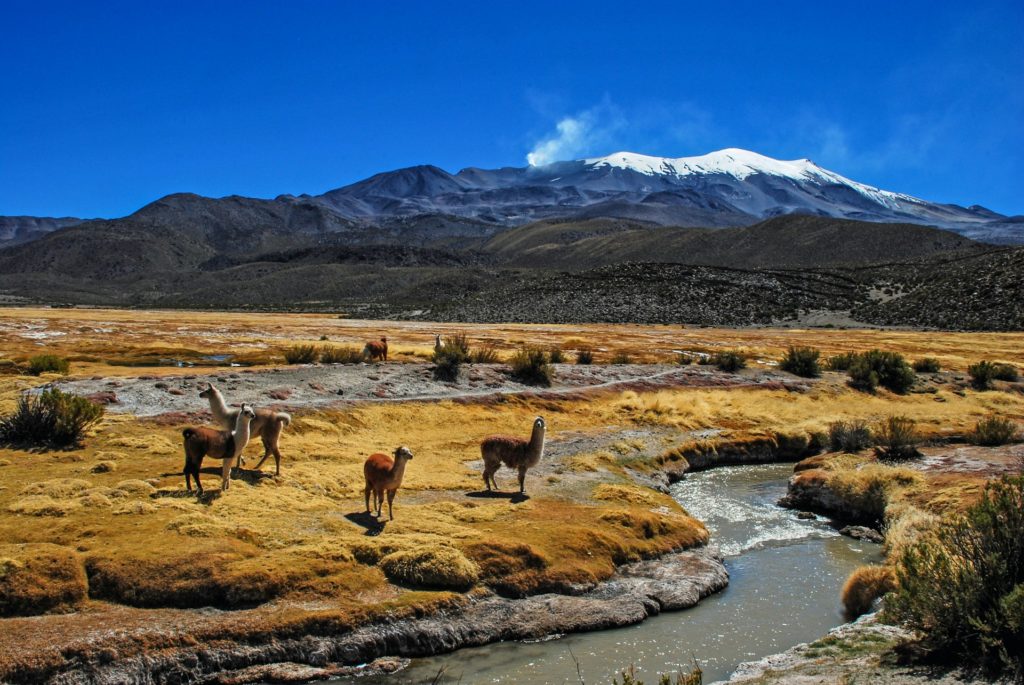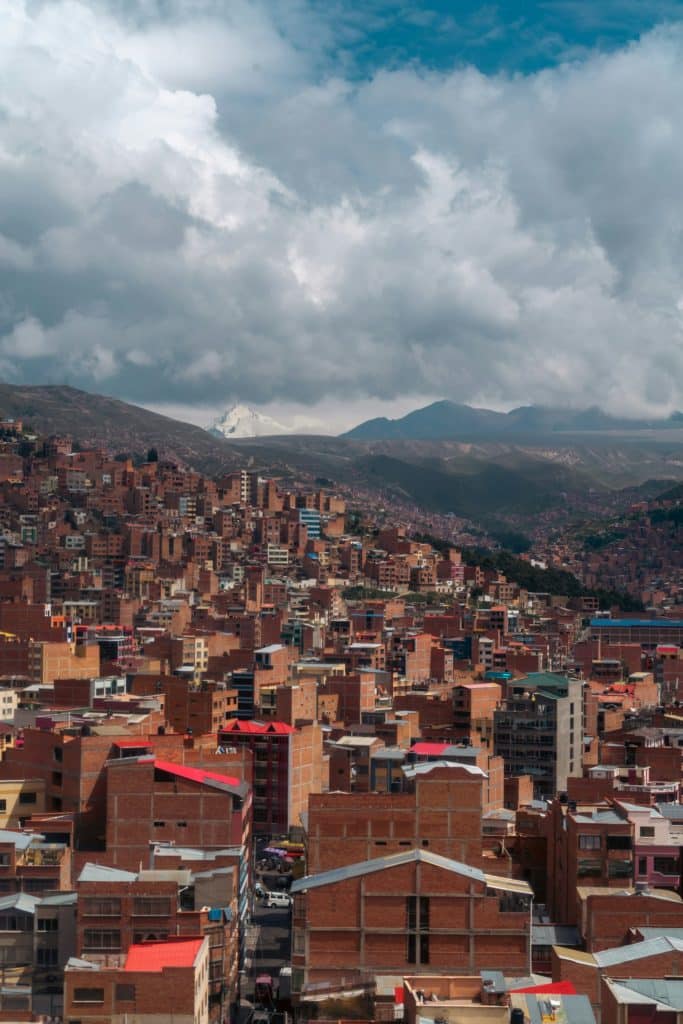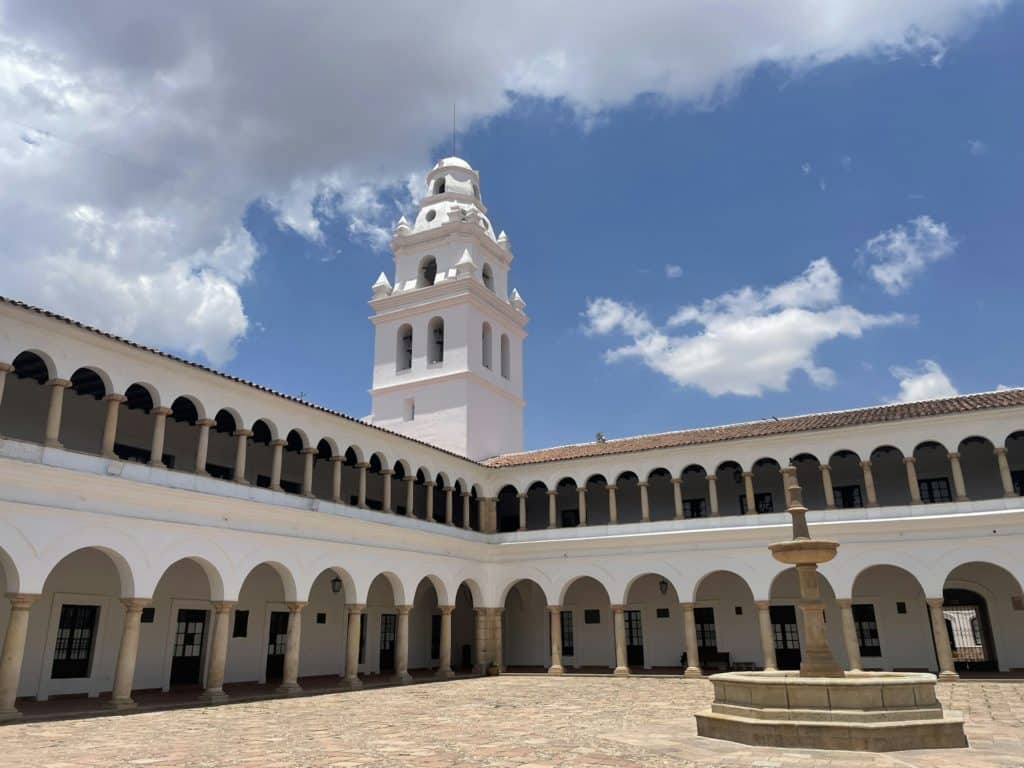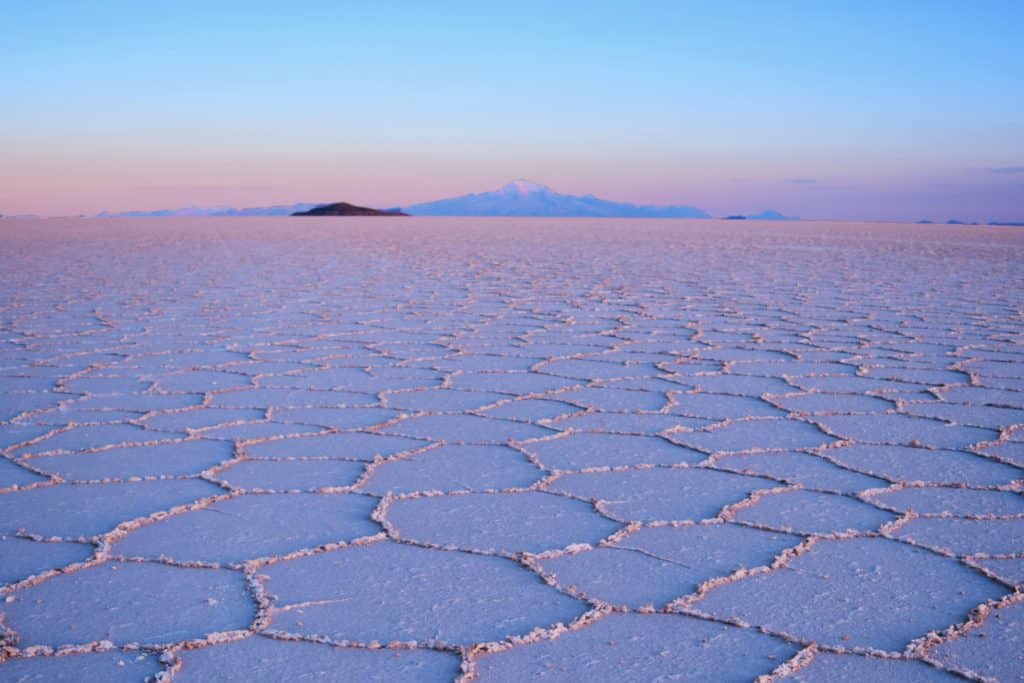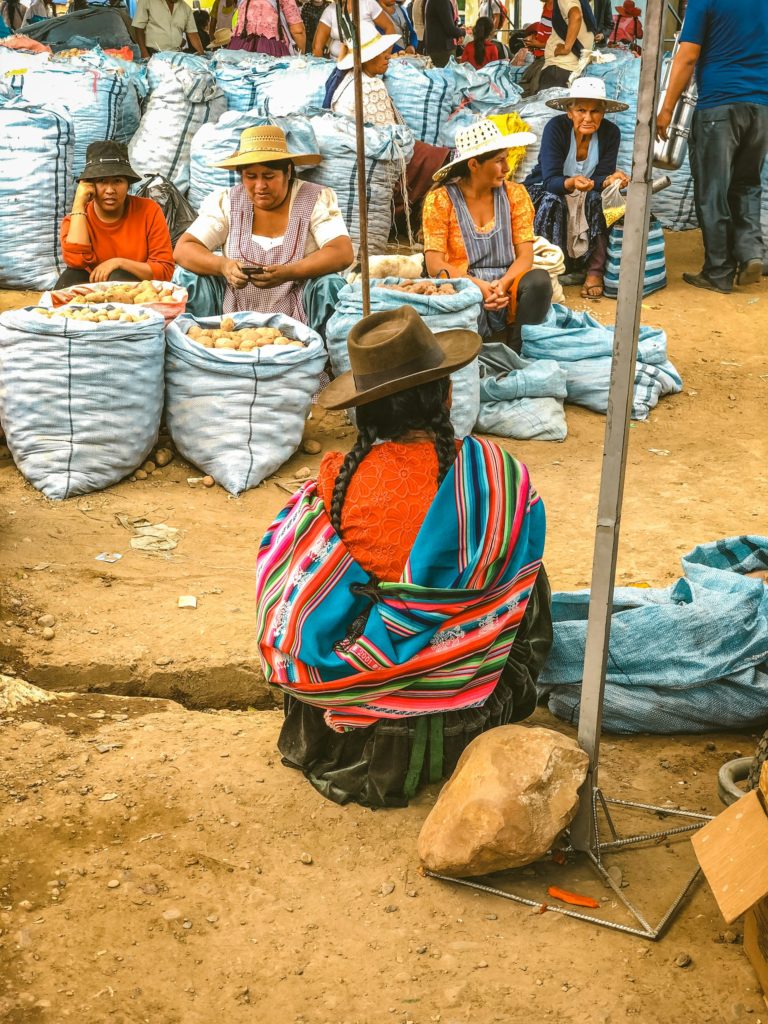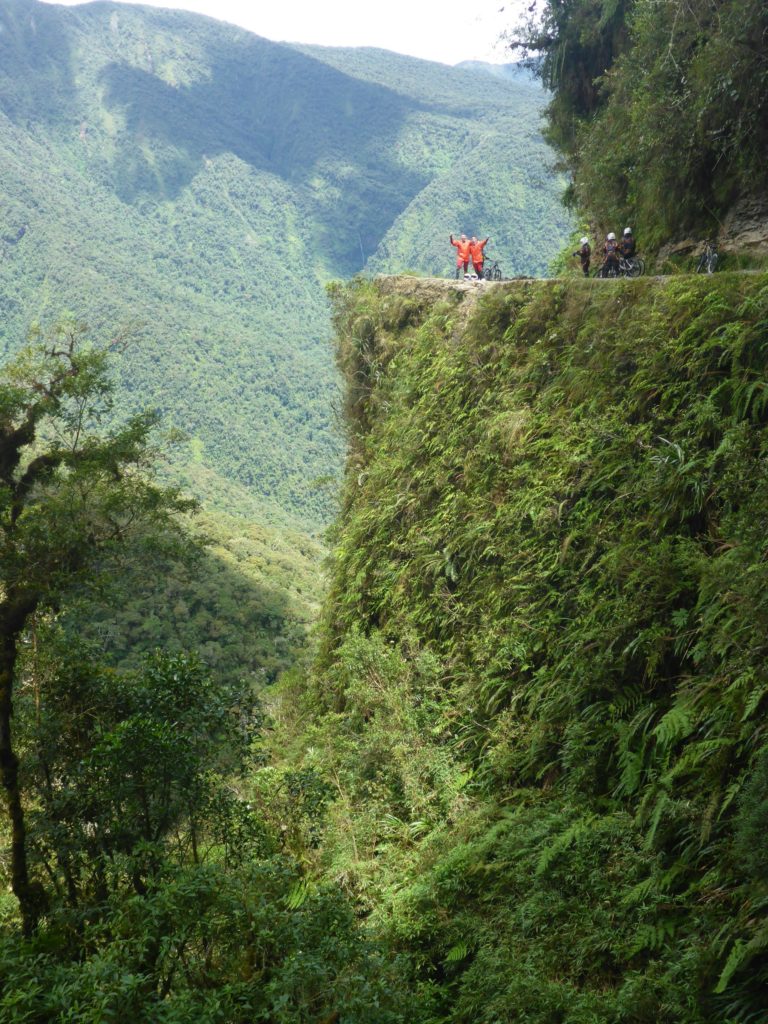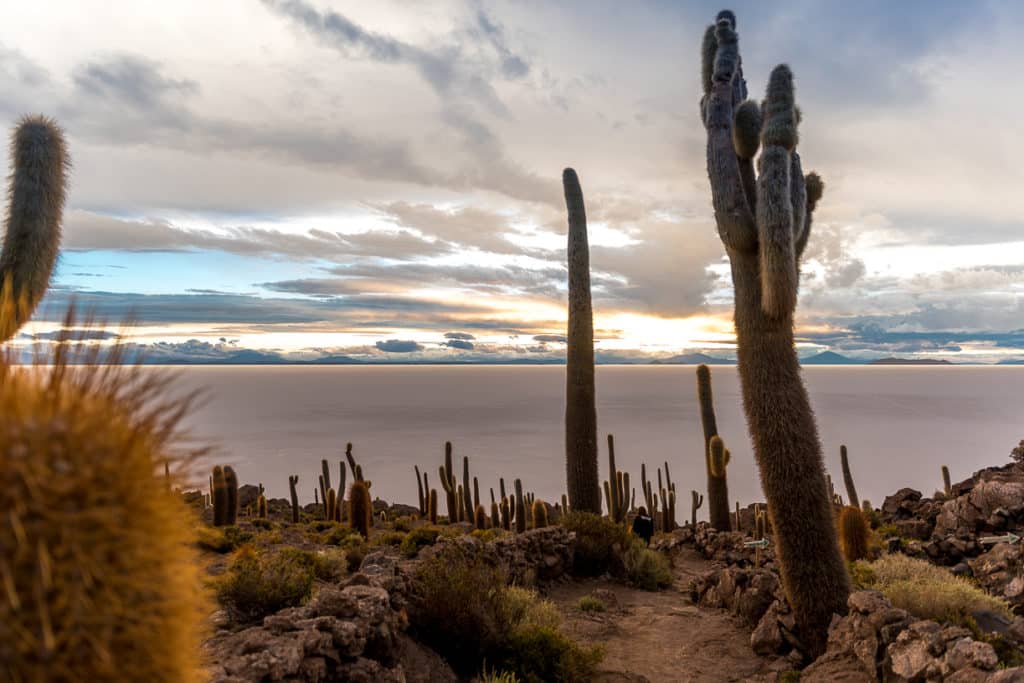Welcome to Bolivia. It’s wild, it’s layered, and it doesn’t care what you expect from it.
This is a place where ancient traditions aren’t staged for tourists — they’re lived. Where the landscape shifts from razor-sharp mountains to salt deserts that feel like you’ve left the planet.
Once whispered about in backpacker bars and crumpled guidebooks, Bolivia is no longer a secret. But it still feels like one. The kind of place that challenges you in all the right ways — high altitude, low comfort, but deep, unforgettable rewards.
From the windswept plains of the altiplano to markets bursting with color, smoke, and centuries of history — this country offers more than postcard views. It offers stories. Layers. Contrasts. Cities that hum with chaos and pride. Food that’s humble, strange, and unforgettable.
Home to one of the largest Indigenous populations in South America, Bolivia’s soul runs deep. You don’t just visit — you listen, you taste, you adjust.
This guide doesn’t just show you where to go. It points you toward the strange and the beautiful — the parts that get under your skin and stay there.
Quick Summary – Bolivia Travel Guide 2025-2026
Planning a trip to Bolivia? Here’s a quick breakdown of what you need to know before you go:
-
🛂 Visa Requirements:
-
US citizens need a visa (~$160 USD)
-
Most EU, UK, and Canada travelers enter visa-free for up to 90 days
-
-
🗓️ Best Time to Visit:
-
May to October (dry season) is ideal
-
Rainy season: November to March (especially in the Amazon)
-
-
📍 Top Destinations:
-
Salar de Uyuni, La Paz, Lake Titicaca, Sucre, Potosí, Madidi National Park
-
-
🧳 What to Pack:
-
Warm layers (cold nights!), sunblock, water bottle, altitude meds
-
-
🚍 Getting Around:
-
Long-distance buses are common
-
Domestic flights available for longer routes (e.g., La Paz–Uyuni)
-
-
🧠 Important Tips:
-
Altitude sickness is real: acclimate slowly
-
Carry cash — cards are not widely accepted
-
Travel insurance highly recommended
-
Why Travel to Bolivia in 2025-2026?
Bolivia doesn’t beg for your attention — it earns it. In a world of over-touristed hotspots, Bolivia remains wonderfully unpredictable, raw, and intensely real. It’s not built for selfies and resort packages. It’s built for the curious.
In 2025, this landlocked Andean nation is still one of South America’s most underrated travel experiences. But that’s changing. Border crossings are smoother. Infrastructure is improving. And yet, the soul of the country — that strange, beautiful fusion of ancient Andean spirituality, Indigenous resilience, and wild geography — remains intact.
Here’s what makes Bolivia different — and worth every bumpy road and breathless step:
Landscapes You Won’t Believe Are Real
Bolivia is nature’s contradiction.
You’ll go from the blinding white of Salar de Uyuni — a salt flat so surreal it feels like walking on another planet — to the tangled, humid chaos of the Amazon Basin. You’ll stand at 4,000 meters on the altiplano and feel like the sky is just a little closer.
Few places on Earth pack this much topographical drama into one country.
A Culture That Refuses to Be Simplified
Bolivia isn’t a place you visit to “check the box.” It’s a place you feel.
Home to one of the largest Indigenous populations in Latin America, this is a country where traditions aren’t museum pieces — they’re alive, worn, danced, and cooked every single day.
In La Paz, you might take a cable car over a sea of red brick houses before descending into a witch market selling dried llama fetuses and herbal love potions.
In the highlands, you’ll see women in bowler hats and layered polleras not as costumes, but as identity. Pride. Presence.
A Country on Its Own Time — and That’s the Point
Bolivia isn’t fast. It’s not polished. Sometimes it doesn’t make sense.
And that’s exactly why it’s magical.
You might lose a day because of a roadblock protest. Or arrive late to a town just in time for a wild, beautiful carnival parade no one told you about. Plans shift. Altitude hits. The Andes stare back at you.
And somewhere along the way, you realize you’re not just traveling — you’re adjusting. That’s the Bolivia effect.
In 2026, Bolivia Is Opening Up — But Still Untamed
With more overland routes open, better Wi-Fi, and a growing interest from intrepid travelers, Bolivia is becoming easier to navigate — but not easier to define. It’s not for everyone. But if you want a journey that shakes up your senses and rewires your idea of what travel is… this is your place.
Top Places to Visit in Bolivia
Bolivia doesn’t cater to passive sightseeing. It challenges you, moves you, and sometimes leaves you breathless — literally. The country’s geography is as dramatic as its culture, and every destination feels like a different universe stitched together by stubborn buses, altitude, and raw beauty.
If you’re the kind of traveler who prefers real over polished, and stories over schedules, here are the places you absolutely shouldn’t miss.
1. Visit the mystical beauty of Lake Titicaca
The highest navigable lake on Earth is more than just pretty blue water. This is where Inca legends begin — literally.
Cross to the Isla del Sol, believed to be the birthplace of the sun, and hike ancient stone paths with no cars, no noise, just llamas and wind.
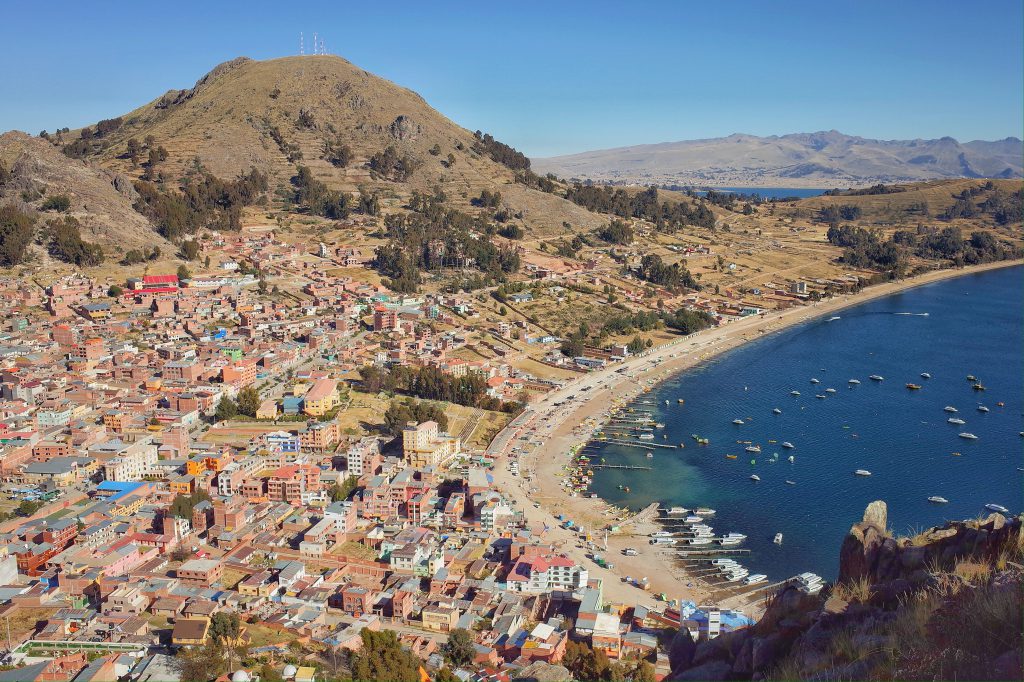
View Over Copacabana Port. Picture by Ounie Christianson.
Explore the islands of the world’s highest navigable lake from the quaint port town of Copacabana. Marvel at the calm blue waters stretching away from the ‘stations of the cross’ viewpoint. In addition, get under the skin of the lake by visiting Aymara communities that have inhabited the islands for millennia.
Moreover, you can take a short boat ride over to the Island of the Sun, Isla del Sol. Land at the port of Yumani and climb the Incan stairs for spectacular views. There are over 80 ruins on this island alone, all easily walkable and set amongst stunning scenery.
Just to the east of Isla del Sol lies Isla de la Luna, Island of the Moon. Here it is said in Incan mythology that the God of the Incas made the moon to rise. Then, today you can wander the ancient sites, including taking in the ruins of an Incan nunnery. All while enjoying the serenity of the surrounding lake.
2. Experience the jungle in the Bolivian Amazon
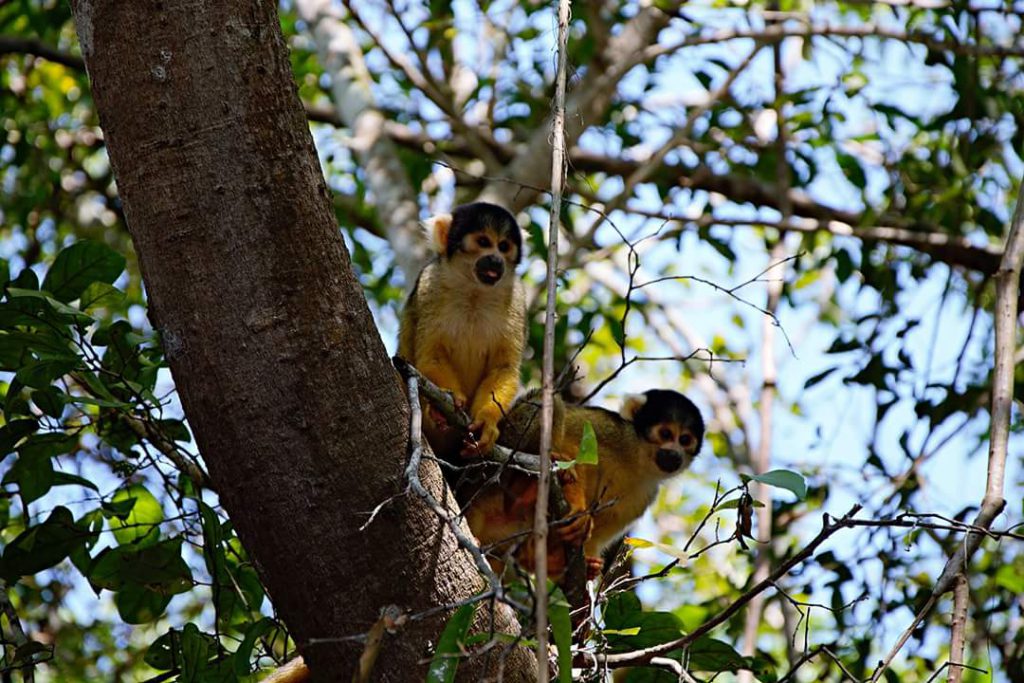
Wildlife in Madidi National Park. Photo by Marjolein Puype.
The Madidi National Park spans over 18,000 square kilometres (7000 square miles) and is one of the world’s most bio-diverse regions. Stay at an eco lodge in the heart of the jungle and fall asleep to the sound of nature. This Bolivia Travel Guide advises accessing the jungle via the River Beni at Rurrenabaque.
Visit indigenous Quechua-speaking communities and learn about their way of life while exploring the Amazon basin. Also, follow experienced guides into the pristine rainforest and enjoy watching a huge variety of wild animals. Then, you might be lucky enough to spot Jaguars, River Dolphins, Pumas, hundreds of bird species and the Titi Monkey. Consequently, this is a real nature-lover’s paradise.
3. Tour the breathtaking Salar de Uyuni
You’ve seen the photos — the infinite salt, the reflection shots, the trick photography. But none of it prepares you for the sheer silence of standing on a prehistoric lake turned alien landscape.
Come in the rainy season (Jan–Mar) for the mirror effect, or in the dry months to drive across the cracked salt crust to sleep in a hotel made entirely of it.
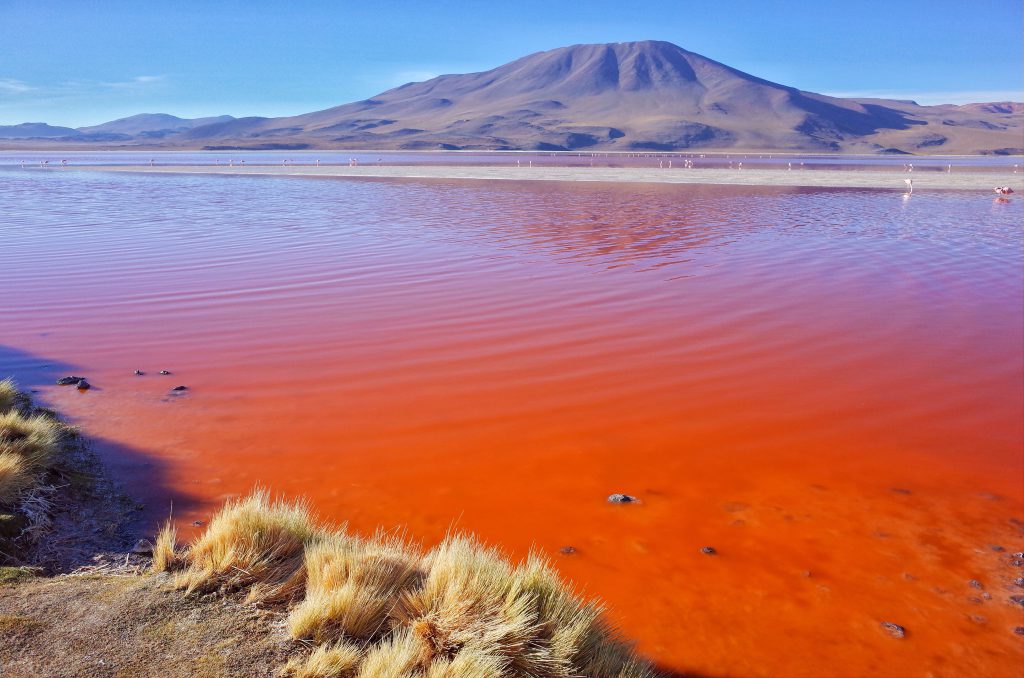
Laguna Colorado on the Uyuni Salt Flats Tour. Picture by Ounie Christianson.
Take an expertly guided tour through some of the strangest landscape on earth. Spend 3/4 wonder-filled days exploring this otherworldly destination in style. The salt flats are a massive 10,582 square kilometers (4,086 sq mi), due to this you will be awe-struck.
Also, you can witness the pastel pink flamingos in the lagunas and bathe in steaming hot springs. Equally, ride through barren deserts and in the shadow of volcanoes. Together with a stay at the Tayka de Sal a luxury hotel constructed from salt, it will be a truly immersive experience. Click here for our full essential guide to Bolivia’s most compelling natural phenomenon.
Don’t miss: the train graveyard in Uyuni, sunrise on the flats, and a night under the clearest stars you’ll probably ever see.
4. Sample the world’s highest-altitude wine in Tarija
A trip to the small town of Tarija, in the south of Bolivia, is a must. Well and truly on the discerning traveller’s map, it is dotted with many wineries. Picturesque Tarija is packed with rustic wine bodegas and vineyards where you can savour the locally produced wines. Much as being a tasty experience, this is a personal, boutique one. Especially relevant are the bespoke tasting tours of full-bodied reds and floral whites. Also, to be enjoyed alongside fresh local cuisine.
Furthermore, this Bolivia Travel Guide suggests you sample another great local speciality, the spirit Singani.
5. Enjoy the foodie delights of Cochabamba
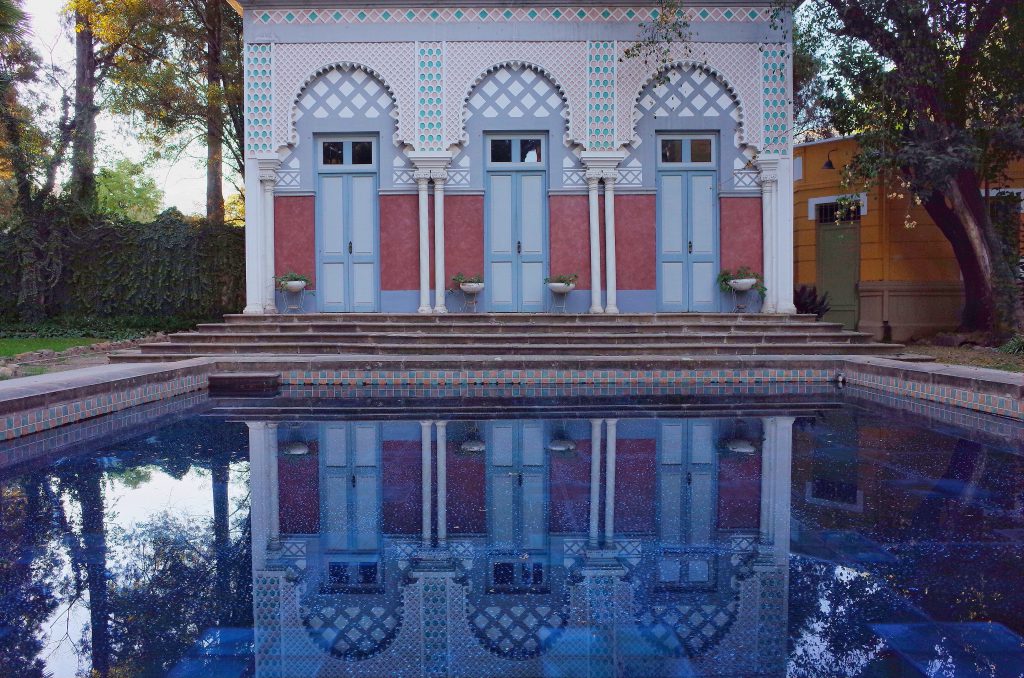
Swimming Pool in the Grounds of Palacio Portales. Picture by Ounie Christianson.
The city is known as the ‘culinary capital’ of Bolivia and the locals are fiercely proud of their food heritage. Visit noteworthy restaurants Paprika or Marvinos to sample the yummy sub-Andean dishes of the region. Tuck into Silpancho, Sopa de Mani, Pique Macho and all the quinoa you can get your hands on! Or rather, simply bask in the moderate climate of beautiful Cochabamba, exploring the city centre.
Finally, visit Palacio Portales, the opulent home of one of Bolivia’s richest men. The serene yellow house is set amongst elegant gardens, designed in an Italian style. Wander through each room, which take inspiration from international cultures. Then don’t miss the Alhambra inspired games room!
6. Visit unique La Paz-Where Chaos Meets Altitude
La Paz is loud, messy, vibrant, and sitting at 3,600 meters — it demands your lungs adjust. Ride the cable car system (Mi Teleférico), the world’s highest urban transit network, and watch this high-altitude capital sprawl across valleys and cliffs.
One moment you’re in a modern café, the next in a market buying dried frogs from a cholita in a bowler hat.
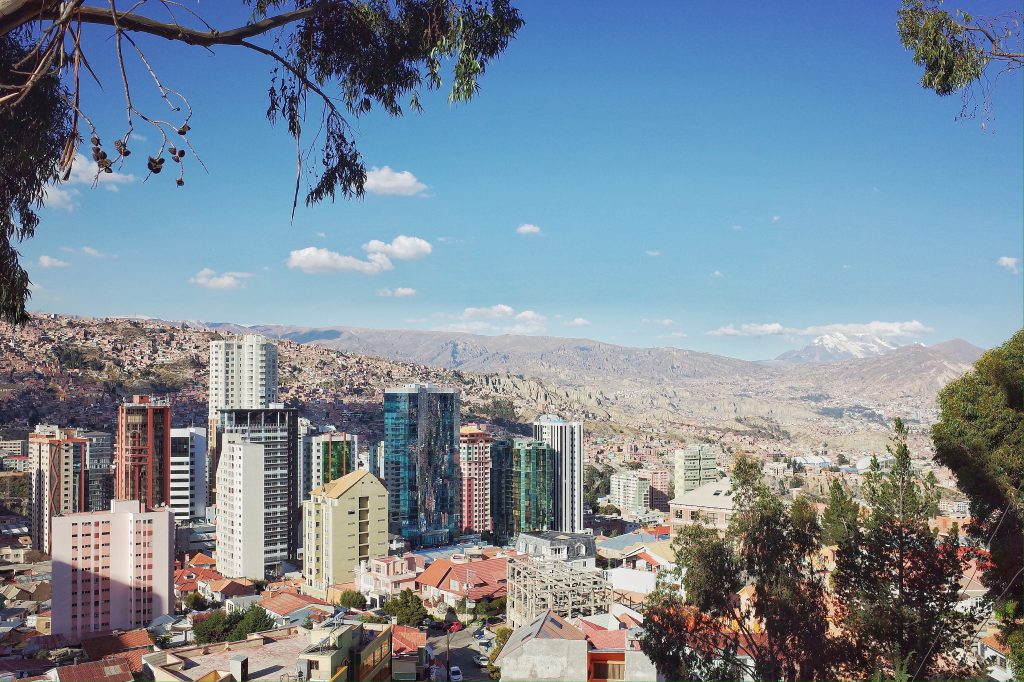
View of Downtown La Paz. Picture by Ounie Christianson.
Surrounded on all sides by imposing mountains La Paz is set in a large basin. Hemmed in on all sides by majestic mountains, it is a fascinating place where all of Bolivia mixes. So be sure to walk the narrow streets, discovering the fine museums, interesting art galleries and busy markets. Understand more about the culture of the Aymara people that inhabit this colourful and cosmopolitan city. Ride the Mi Teleferico for amazing aerial views over the city. Also, get stuck in to some serious shopping in cosmopolitan Zona Sur. Likewise stay in comfort at one of La Paz’s new breed of boutique hotels.
While La Paz is not famous for its food, in recent years a new and innovative scene has begun to emerge. Get an insight into the exciting food scene here. Most noteworthy, is the gourmet cuisine at Gustu. An eaterie opened by the co-owner of the world-renowned Noma restaurant. In conclusion, you really won’t run out of things to do in this exciting metropolis. Finally don’t forget to top up your knowledge from our Bolivia Travel Guide with our Ultimate Travel Guide to La Paz.
7. Indulge in a coffee tour and hike in the tropical Los Yungas region
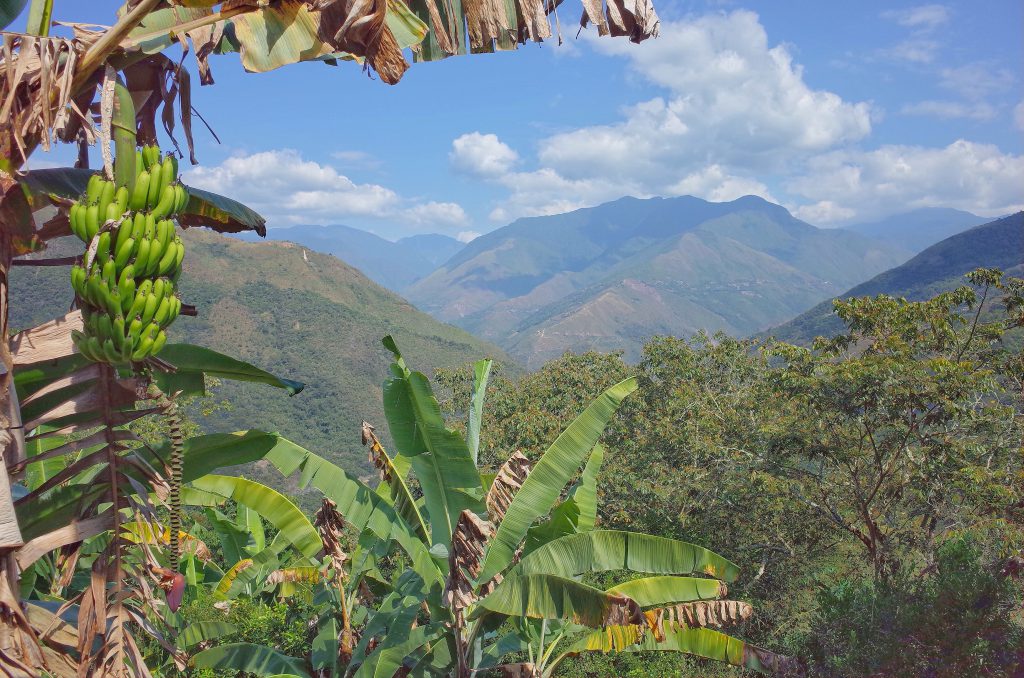
View of the Coroico Valley in Los Yungas. Picture by Ounie Christianson.
Take a break from the harsh climate of La Paz and step into nature. While just a couple of hours drive from the capital, the small town of Coroico is a world away from the metropolis. Here learn all about the art and labour of an authentic South American coffee farm in this mountainous region.
The Bolivia Travel Guide advises that you take a tour of a plantation and try the delicious fresh coffee. The lush green valleys that surround Coroico are full of trails with fabulous views. So, after sampling the coffee you can also go hiking in the lush green valleys.
8. Discover the rich history of Potosí
Once the richest city in the world, thanks to the silver mines of Cerro Rico, Potosí is beautiful and brutal.
You can tour the mines (though it’s not for the faint of heart), visit haunting colonial churches, and get a sense of how much history — and suffering — is buried under this mountain.
Note: The mine tours are intense, and ethically complicated. Do your research before you go.
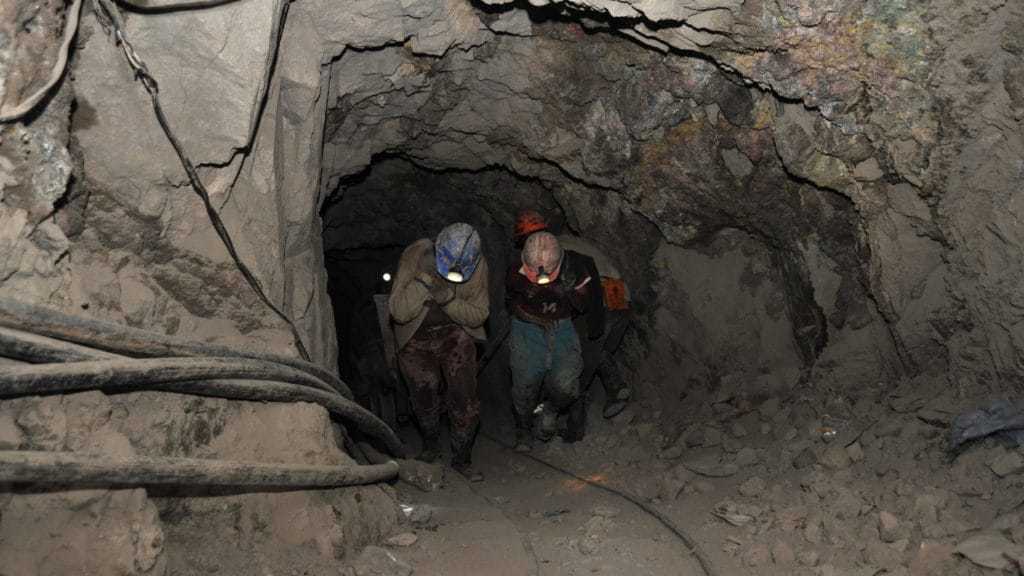
One and the highest cities in the world at 4,090 metres (13,420 ft), Potosí was also one of the richest. Today the beautiful buildings in colonial centre of the city give a glimpse into the affluent past of Potosí. For many years this was also the location of the Spanish colonial mint, therefore a place of great importance to the colonisers.
The imposing red hill of the Cerro Rico, Rich Hill, towers above the city. So-called as it was mined for its rich resource of silver and was the primary source of wealth in the city. At one time 60% of all the silver produced in the world came from Potosí. So, learn more about this fascinating place by visiting the Casa de la Moneda, Bolivia’s first mint. Although originally the mint serving Spanish empire it now houses a great museum full of historical treasures.
9. Stroll the streets of charming Sucre

The Courtyard in the Santa Clara Convent in Sucre. Picture by Ounie Christianson.
This 16th century UNESCO city is the actual capital of Bolivia, with its whitewashed buildings. Soak up the pleasant and relaxed atmosphere. Find out more about the history of this vibrant country at the Casa de la Libertad, the birth of Bolivia’s constitution. In addition, stroll on the snow-white rooftops of the Convento de Santa Clara for the best views of the city.
Also,this Bolivia Travel Guide suggests the Sunday textile market of Tarabuco as a must visit. Just a short trip out of town to stroll for hours amongst the stalls laden with handmade goods. So, this is a great way to understand more about the indigenous groups that make up roughly 60% of the Bolivian population.
10. Enjoy Bolivia’s tropical lowlands in Santa Cruz de la Sierra
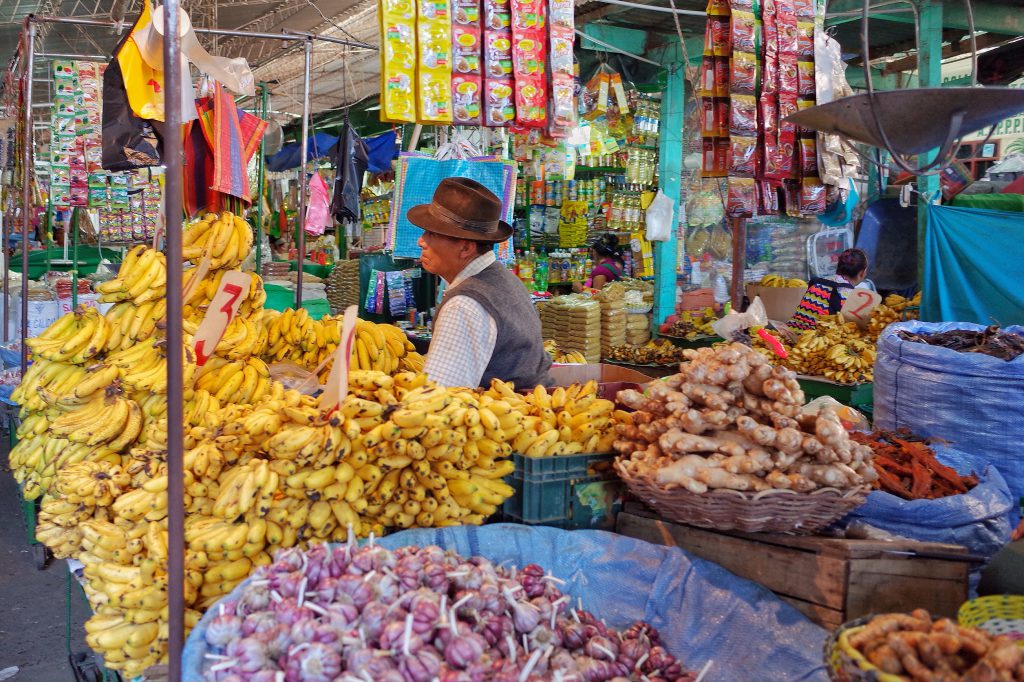
A fruit seller at Barrio Lindo Market in Santa Cruz de la Sierra. Picture by Ounie Christianson.
Santa Cruz is the gateway to eastern Bolivia. It has the gift of a warm climate, low altitude and gorgeous wildlife. In addition, there is a vibrant night-life, amazing markets and unique culture. This busy city is actually more populous than La Paz. Yet, the centre has a chilled Mediterranean vibe with tall palms bordering shady plazas. Also, sample the delicious food of the region, alongside international fayre, in the one the city’s many excellent restaurants
Moreover, Santa Cruz makes for a great base for trips into the nearby countryside. The Amboró National Park, the Jesuit missions and the Loma de Arenas region. Also, one of Bolivia’s best-kept secrets is the San Miguelito Jaguar Conservation Reserve. It is home to the highest density of the wild cat in the world. In a gorgeous natural setting on a traditional ranch, you can enjoy Bolivian nature at it’s best.
Travel Note:
Bolivia isn’t about checking boxes — it’s about experiencing contrasts. Each destination isn’t just a place, it’s a different version of Bolivia. High, low, hot, cold, quiet, chaotic. All of it woven together with coca leaves, altitude, and heart.
So, that is our Bolivia travel guide all wrapped up.
Hopefully, our Bolivia travel guide will help you uncover this intriguing and exciting destination. You can start planning your trip now!
Contact us for more information or to customize your unique Bolivian tour.
Bolivia travel guide – about Bolivia
Population: 10.89 million
Capital city: La Paz (administrative), Sucre (constitutional)
Official language: Spanish
Currency: Bolivianos (approximately 6.9 BOB = $1 USD)
Travel Tips You Won’t Find in a Brochure
Guidebooks will tell you what to see. Locals will tell you what not to do. Bolivia, though, will teach you the hard way — and that’s part of the charm.
If you’re expecting polished itineraries and flawless logistics, you’re in the wrong country. But if you’re open to detours, contradictions, and a bit of beautiful chaos, Bolivia will reward you tenfold.
Here’s what no glossy brochure will say out loud:
Altitude Will Kick Your Ass — Respect It
La Paz sits higher than most mountain peaks in Europe. Uyuni feels like outer space. Even breathing can feel like a chore.
-
Take at least 2–3 days to acclimate
-
Drink the coca tea — it won’t make you high, but it’ll help
-
Avoid alcohol and big meals the first 24 hours (seriously)
-
Headache? Soroche pills. Locals will swear by them.
Altitude isn’t just a physical adjustment — it’s a humbling reminder that you’re not in charge here.
Travel Time Is Just a Suggestion
A “4-hour” bus ride can become 9. Protests, weather, or a llama on the road — Bolivia runs on its own schedule.
-
Bring snacks, water, and a hoodie (the AC is either off or Antarctic)
-
Choose tourist buses for long rides (more reliable, less stress)
-
Flights save time, but don’t expect punctuality
Bonus: overnight buses are decent and save you a night in a hotel.
Cash Is King — Especially in Small Towns
Don’t count on your card working, even if there’s a Visa or Mastercard sticker on the door.
-
Withdraw cash in major cities before heading to remote areas
-
ATMs can run dry, especially in Copacabana or Uyuni
-
Always carry small bills for markets, taxis, and tips
Some places charge extra just for using a card — and others will laugh if you even ask.
Don’t Underestimate the Spiritual Side
Witch markets. Offerings to Pachamama. Miniature rituals where you “buy” your future with fake money and tiny llamas. Bolivia takes the invisible world seriously.
You don’t have to believe — but you do have to respect.
-
Don’t take photos of rituals or Indigenous ceremonies without permission
-
If someone’s burning llama fat or blessing your bus with alcohol, just go with it
Bolivia isn’t “quirky.” It’s deeply spiritual. That’s not a trend. It’s truth.
Ready to explore Bolivia your way?
Whether you’re planning to cross borders, chase salt flat sunsets, or dive into Bolivia’s wild culture — we can help.
👉 Message us today and let our local experts help you craft a trip that fits your pace, your passions, and your budget.
📩 Contact us here or send us a WhatsApp — we’ll help you make it unforgettable.
Final Travel Wisdom:
Bolivia isn’t for everyone. It’s not built for comfort or convenience. But for those who travel to feel something, to be thrown off balance in the best way — Bolivia delivers.
Bolivia Travel FAQs
Do I need a visa to travel to Bolivia?
Yes, travelers from the US and a few other countries need a visa. Most EU, UK, and Canadian citizens can enter visa-free for up to 90 days. Always check current policies before your trip.
Is Bolivia safe for solo travelers?
Generally, yes. Use common sense, avoid walking alone at night in unfamiliar areas, and keep valuables out of sight. Cities like La Paz and Sucre are relatively safe for tourists.
What’s the best time to visit Bolivia?
May to October is the dry season and best for highland travel, including the salt flats. November to March is the rainy season, better for visiting the Amazon and avoiding crowds.
Can I use my credit card in Bolivia?
Credit cards are accepted in major cities, upscale hotels, and restaurants. However, many rural areas and local businesses only accept cash. Always carry small bills in local currency.
How do I deal with the altitude in Bolivia?
Ascend gradually, drink coca tea, avoid heavy meals and alcohol when you arrive. Soroche (altitude sickness) is common — consider taking altitude medication and allow time to acclimate.
Is it easy to cross the border from Peru to Bolivia?
Yes. The most common crossing is at Kasani (near Puno), which connects to Copacabana. Buses and tours assist with immigration. Carry your passport, visa (if needed), and proof of onward travel. Read our article about it
Like it? Pin it!



